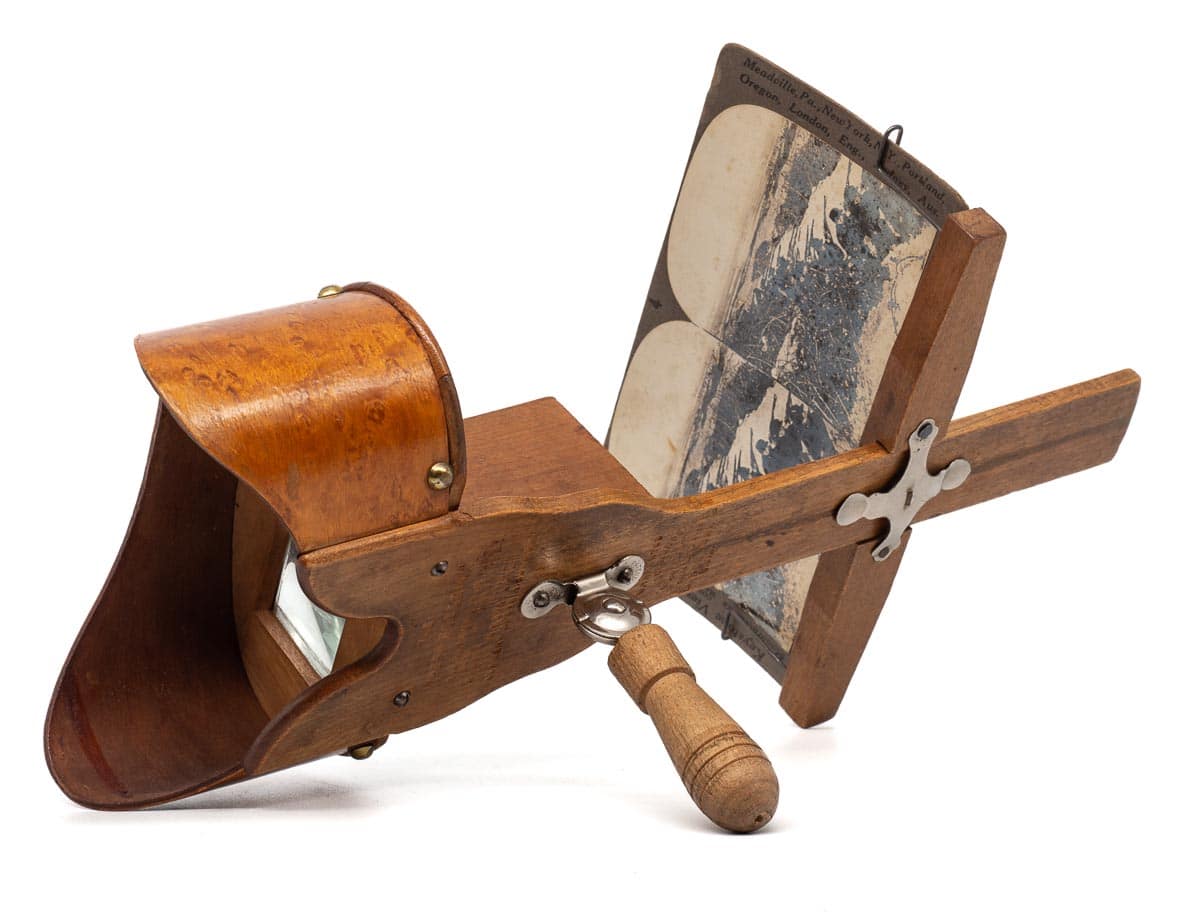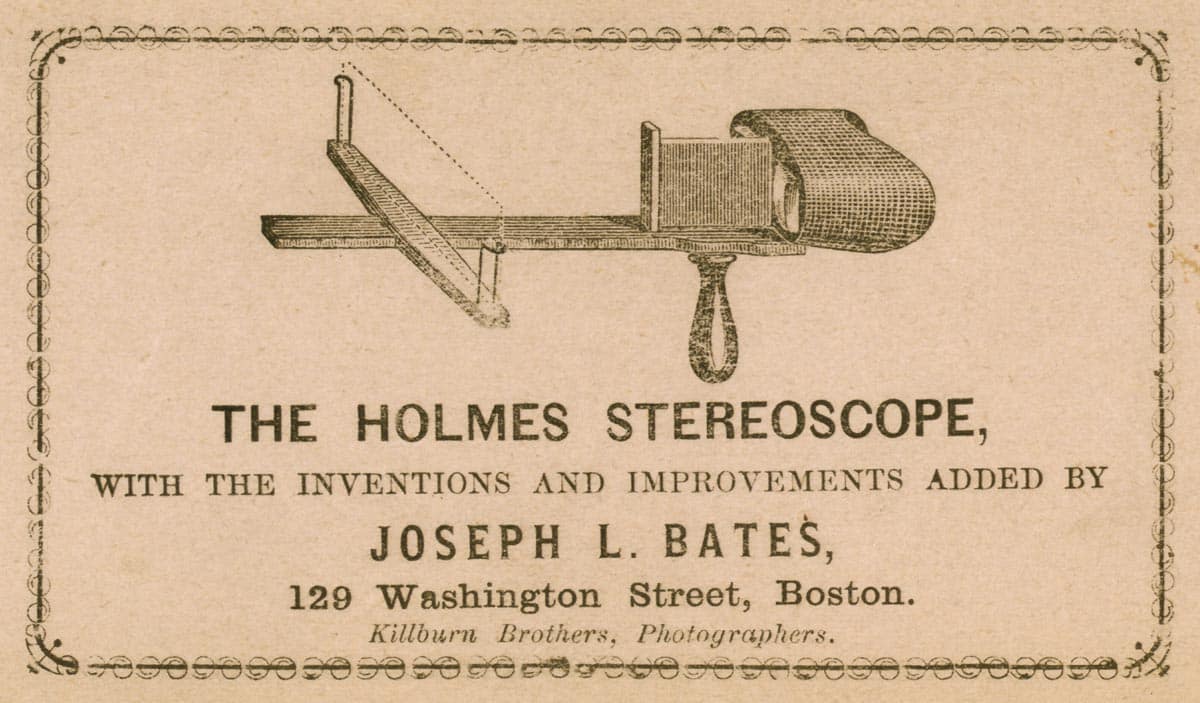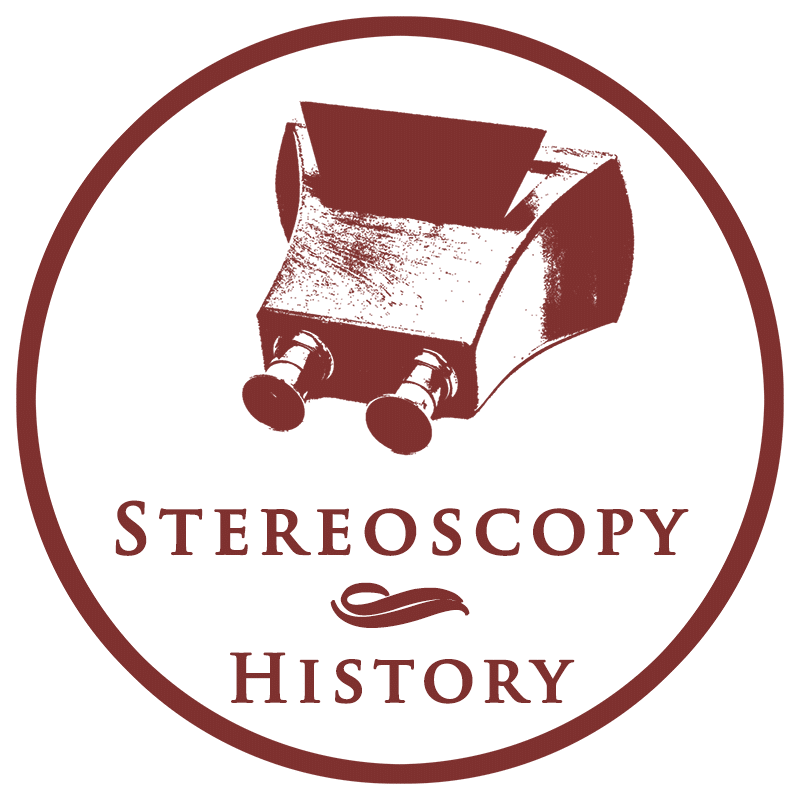
The Perfecscope is a Holmes-Bates type stereoscope. This type was invented around 1860 by the American poet Oliver Wendell Holmes Sr. He did not patent his invention and everyone was free to develop stereoscopes based on his design. The design was further improved by Joseph L. Bates and the viewer became known as the Holmes-Bates stereoscope. The Holmes-Bates stereoscope is a simple and inexpensive viewer for paper card stereoviews. It made stereoscopy accessible to many Americans, and contributed to the “stereocard craze” in the 1890s and early 1900s in the United States. The Perfecscope in this post is labeled Underwood & Underwood, the major stereoview publisher from the United States. An engraving shows the date July 24, 1883, which refers to the patent with number 281,743 of Hawley C. White. The viewer is therefore manufactured by H. C. White Co1.

The later paper card stereoviews were slightly curved, an invention from 1879 by the brothers Benjamin West Kilburn and Edward Kilburn from the United States2. Curved stereoviews reduce reflections and abbreviations that are caused by the cheap prismatic lenses that are used in the Holmes-Bates stereoscope3. There are also sources that state that curved views were manufactured to increase the stereo depth effect4.
Specifications
| Manufacturer: | H.C. White Co |
| Year of introduction: | 1860 (Holmes-Bates type stereoscope) |
| Year of manufacture: | c. 1890 |
| Type: | Hand-held |
| Viewer: | Single-view |
| Serial number: | None |
| Stereoview support: | Paper |
| Stereoview format: | 8.5 x 17 cm |
| Lens focussing: | Yes, by shifting the cardholder |
| Inter-ocular adjustment: | No |
| Eyepiece blinders: | Yes |
| Dimensions (L x W x H): | 32 x 17.5 x 16.5 cm |
| Construction: | Oak and burr walnut |
| Other features: | At the bottom of the frame is The Perfecscope and Underwood & Underwood New York U.S.A. engraved. The metal of the grip contains the date July 24 1883, which refers to its patent. |
Glossary: hand-held / inter-ocular adjustment / prismatic stereoscope / single-view
Underwood & Underwood
Underwood & Underwood was founded in 1881 by the brothers Elmer and Bert Elias Underwood. The company moved to New York in 1891 and became the largest publisher of stereoviews in the world. The brothers developed a selling system by using college students as salesmen. They had a number of freelance photographers, and in 1901 they published 25,000 stereocards a day. They also introduced boxed sets with specific themes such as education and travel. Underwood & Underwood entered the field of news photography in 1910. Due to this expansion, the paper card stereoview production was reduced. In 1920, the production was discontinued and the negatives were sold to the Keystone View Company. Underwood & Underwood ceased business in the 1940s. They had manufactured between 30,000 and 40,000 stereoview titles.
